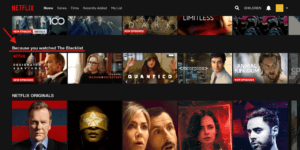
15 Jul Maximizing Engagement with Dynamic Content: A Guide to Personalized User Experiences
Dynamic content is the type of content available on the web that changes based on user data, behavior, location, and preferences. A dynamic website provides a personalized user experience, which is more likely to increase engagement and conversion rates than static websites.
Why Dynamic Content Matters?
Dynamic content is customized content according to the user’s past shopping experience, leading to more relevant suggestions for products. This customization helps reduce bounce rates and increases conversion rates by showing content that aligns with the users’ interests and previous buying behaviors. For example, an e-commerce clothing store suggests related products based on items a customer has previously viewed or added to their cart.
It is measured that the more customized the content, the more customer-centric the marketing. This will have overall good outcomes for the business.
Types of Dynamic Content
- Personalized Content: This includes content based on user behavior. For example, product recommendations are based on the demographic of the customer’s purchased history, such as previously viewed items on the website.
- Contextual Content: At this point, content is gathered to make context adjustments based on the user’s locations and a time-zone, to make interactions more relevant.
Additionally, The representation of dynamic content is majorly based on the context of the customer’s interaction with the brand. This is commonly seen in terms of location and time. - Interactive Content: Allows users to influence the content presented to them directly. Engageing content for users through elements like quizzes or surveys, and collecting data while guiding them toward appropriate products.
- Real-Time Content: This includes updates that keep the site current and engaging, such as live news or social media feeds. These appear regardless of user signals, but it’s proof that your business is active and relevant. It’s a great way of building brand trust, image, and unity among users.

Our Daily Life Examples:
Using dynamic geo-location, McDonald’s will give users the closest store based on their location. Hyatt Hotels will offer different offers based on a user’s indicated travel plans.
Udemy, an online learning platform, will offer course recommendations based on a user’s purchase history.
YouTube music has a constantly updated list of recommendations based on previous viewing and like history, even though you have not subscribed to the specific channel you will see the video feed of your interest.
Your smartwatch “FitBit” tracks your food, exercise, sleep, and weight profile based on your goals upon signup. It then sends regular emails about your goals throughout the day.
Point to Consider When Implementing Dynamic Content
For the effective implementation of dynamic content, businesses should consider several factors in line:
- Data Privacy: It should be at the forefront of any considerations. Brands that can only use, share, and collect customer data within privacy regulations should always be considered.
- Investment: It is suggested to start small with dynamic content to avoid overuse of the budget and user experiences, the need is to focus on the key areas where dynamic content can have the most impact, allowing content to grow naturally and gradually. Define your goals and begin with those areas, letting the rest develop organically.
- Optimization: Regular updates and monitoring are crucial to maintain the relevance and accuracy of dynamic content.
Best Practices
- Know Your Audience: It’s best to understand the core demographics and preferences of the users.
- Segment Your Audience: Use buyer personas to tailor content more precisely.
- Set Clear Goals: Define what you aim to achieve with dynamic content, such as increased engagement or higher sales.
- Utilize Data: Collect and analyze data to refine content strategies.
- Test and Optimize: Regularly conduct A/B testing to see what works best and optimize accordingly.
- Mobile Optimization: Ensure that dynamic content is seamlessly integrated into mobile experiences.
Conclusion
Dynamic content transforms the static nature of websites into interactive, personalized experiences. By leveraging user data and behavior insights, businesses can create more engaging and relevant content, leading to higher user satisfaction and better business outcomes.
Your e-commerce businesses must be vigilant in identifying and addressing common CRO mistakes to maximize their sales conversions.
Embrace these strategies, and watch your e-commerce business flourish as you convert more visitors into loyal customers.
Let’s contact eshop genius through the website at www.eshopgenius.com email nick@eshopgenius.com, or go old-school and call us at +91 8887871125.

No Comments